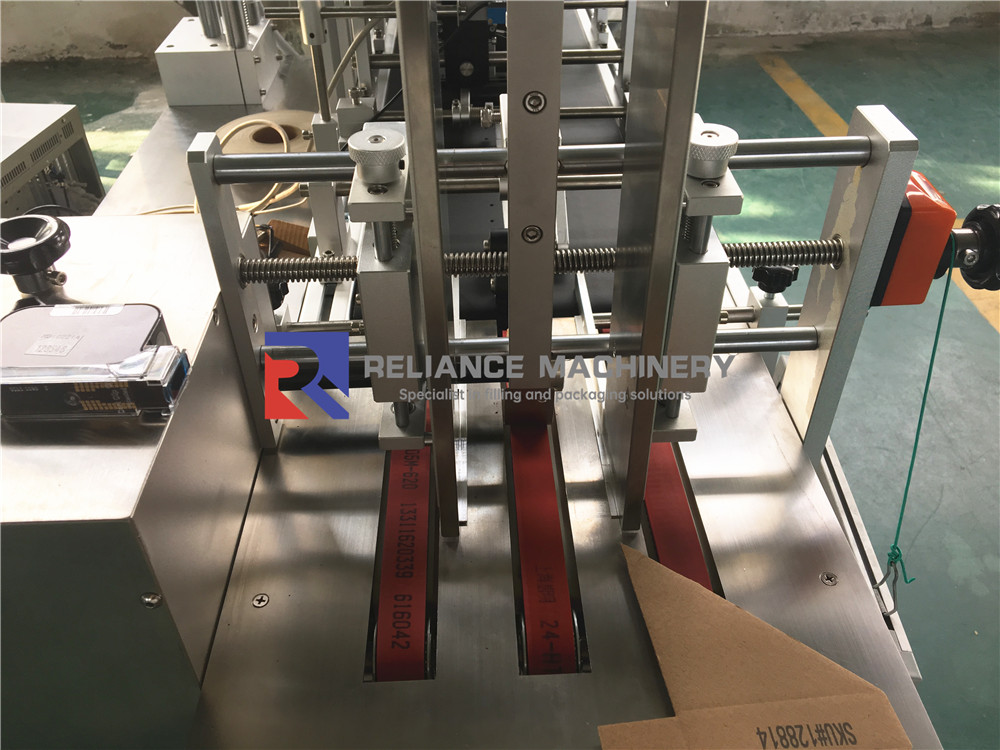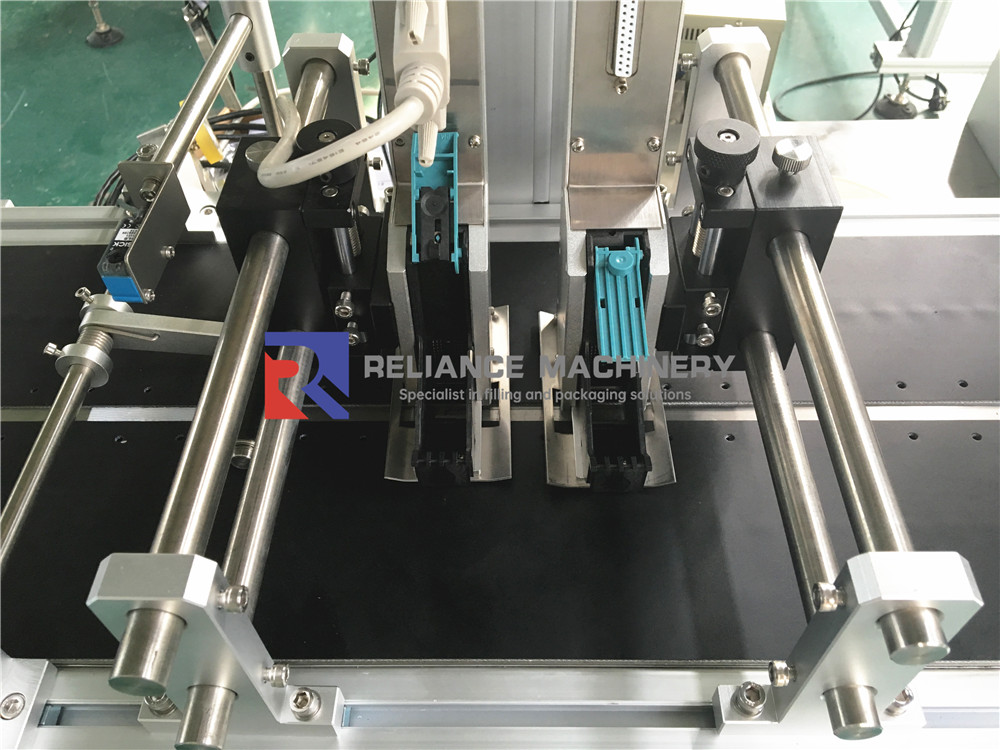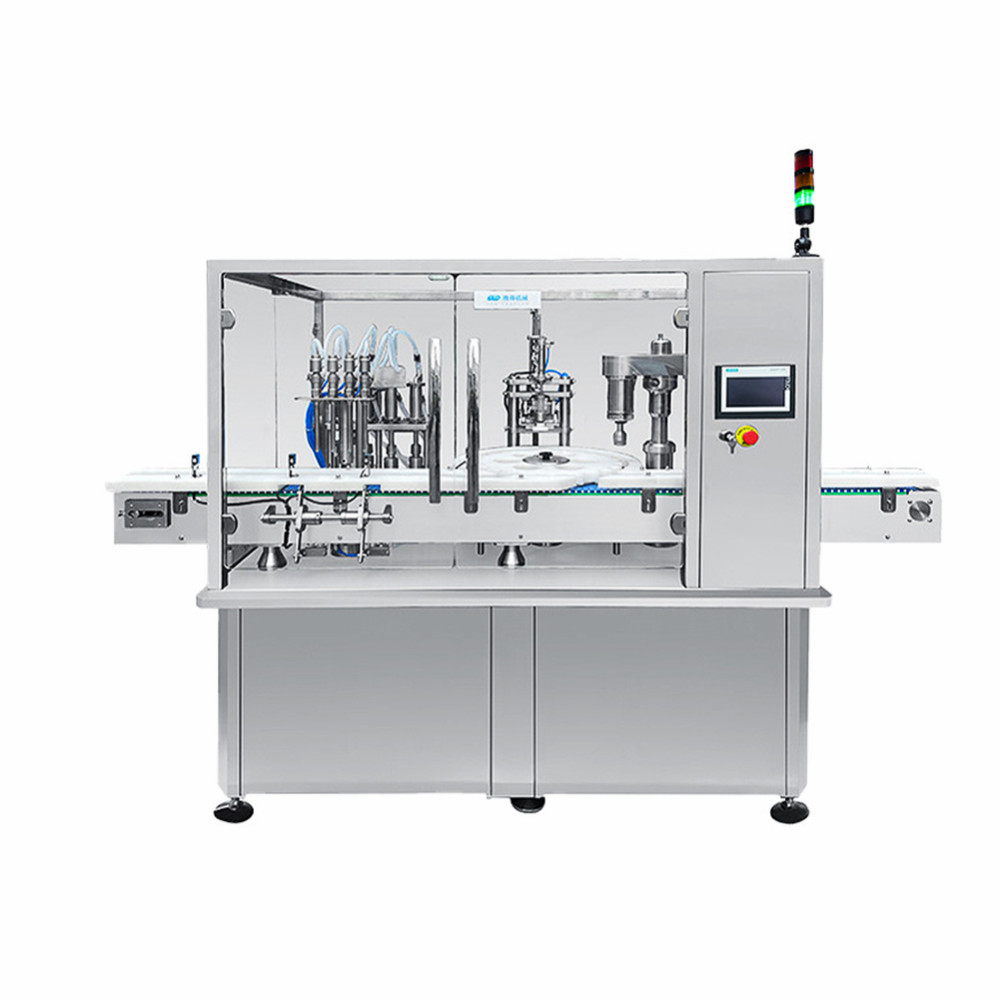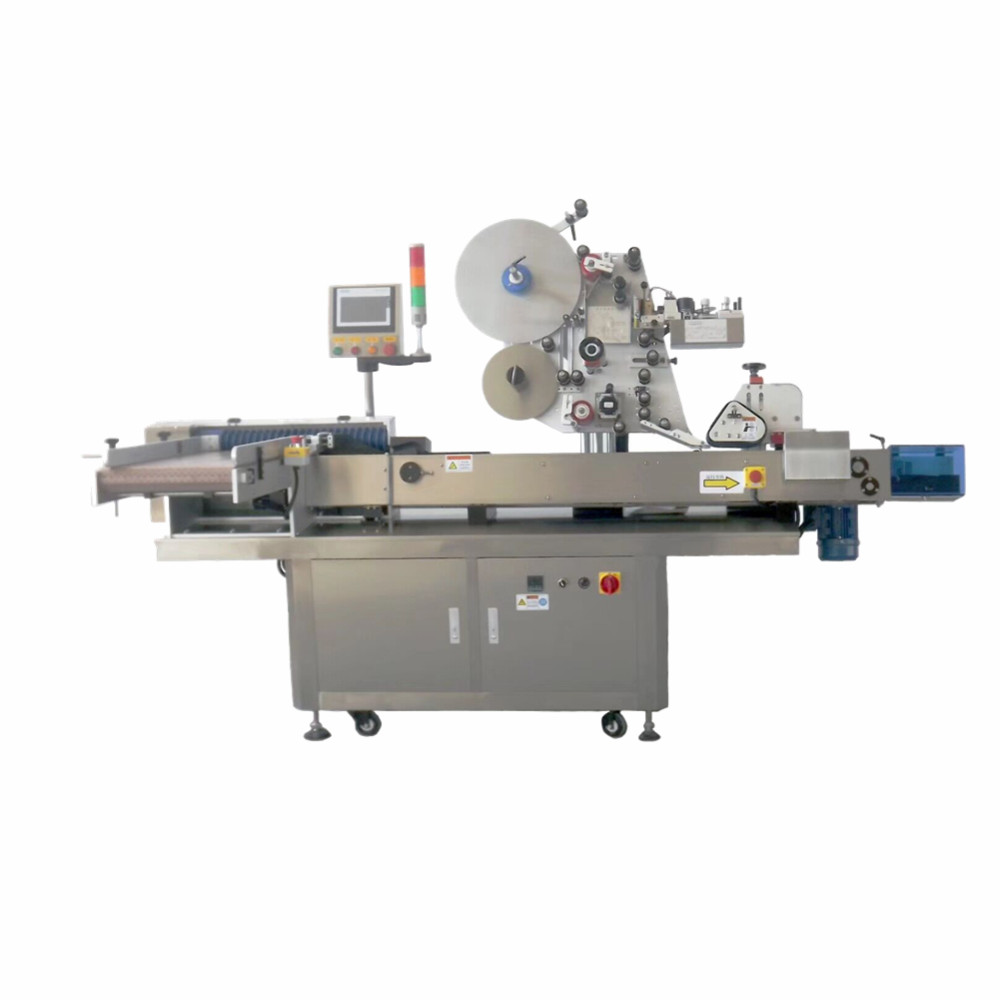Automatic Biology IVD Reagent Container Sticker Labeling Machine
#IVDLabeler #ReagentLabeler #BioContainerLabeler #RelianceLabeler
DESCRIPTION:
IVD stands for In-Vitro Diagnostics, which refers to medical devices and equipment used for testing samples outside the body, such as blood or tissue samples. An IVD container sticker labeling machine is a type of machine used to apply labels to containers that are used for storing and transporting IVD samples.
This machine is designed to apply pre-printed adhesive labels onto the surface of the containers accurately and consistently. The machine works by feeding the containers into the labeling station, where the label is dispensed from a roll and applied to the container. The labeling machine can be set up to apply labels to various types and sizes of IVD containers, such as tubes, vials, and plates.
The labeling machine can also have additional features, such as a barcode scanner or a printing system, to add more information to the label, such as lot numbers, expiration dates, and sample identifiers. This helps to ensure the accurate tracking and traceability of IVD samples throughout the testing process.
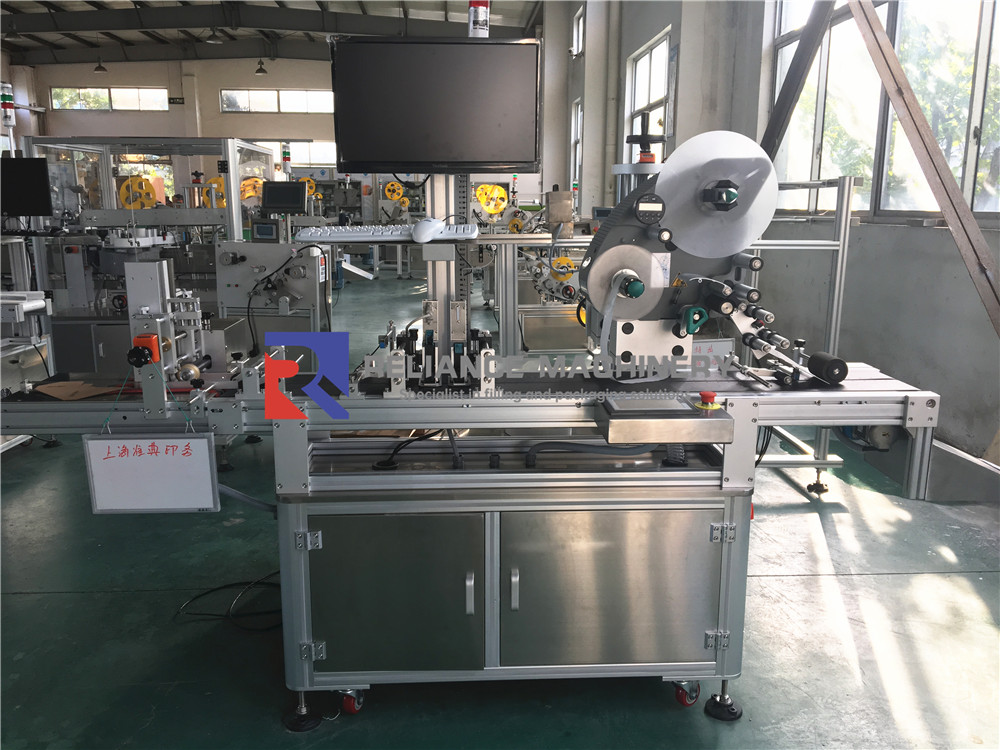
How to choose the right IVD container sticker labeling machine:
Choosing the right IVD container sticker labeling machine can depend on several factors, such as the specific requirements of your laboratory or production facility, the type and size of IVD containers you use, and your budget and resources. Here are some key considerations to help you choose the right machine:
1. Label size and type: Consider the size and type of labels you need to apply to your IVD containers, such as pre-printed labels, barcode labels, or wrap-around labels. Choose a machine that can handle the label size and type you require, and that can apply labels accurately and consistently.
2. Container size and type: Consider the size and type of IVD containers you need to label, such as tubes, vials, or plates, and choose a machine that can handle the range of container sizes and shapes you require. The machine should be able to accommodate different container materials, such as glass, plastic, or metal.
3.Throughput rate: Consider the volume of IVD containers you need to label per day or per hour, and choose a machine that can handle your throughput requirements. The machine should be able to label containers at a speed that matches your production needs, without compromising accuracy or quality.
4.Automation level: Consider the level of automation you need in your labeling process, such as manual feeding or automated feeding of containers, or manual or automatic label dispensing. Choose a machine that meets your automation requirements, while being easy to operate and maintain.
5.Additional features: Consider any additional features you may need in your labeling process, such as barcode scanning, vision inspection, or printing of variable data. Choose a machine that can provide the additional features you require, while being compatible with your existing laboratory or production equipment.
6. Regulatory compliance: Consider any regulatory or safety requirements that apply to your IVD labeling processes, such as FDA regulations, ISO standards, or GMP guidelines. Choose a machine that meets the required compliance standards, and that provides validation documentation, traceability records, and security features as needed.
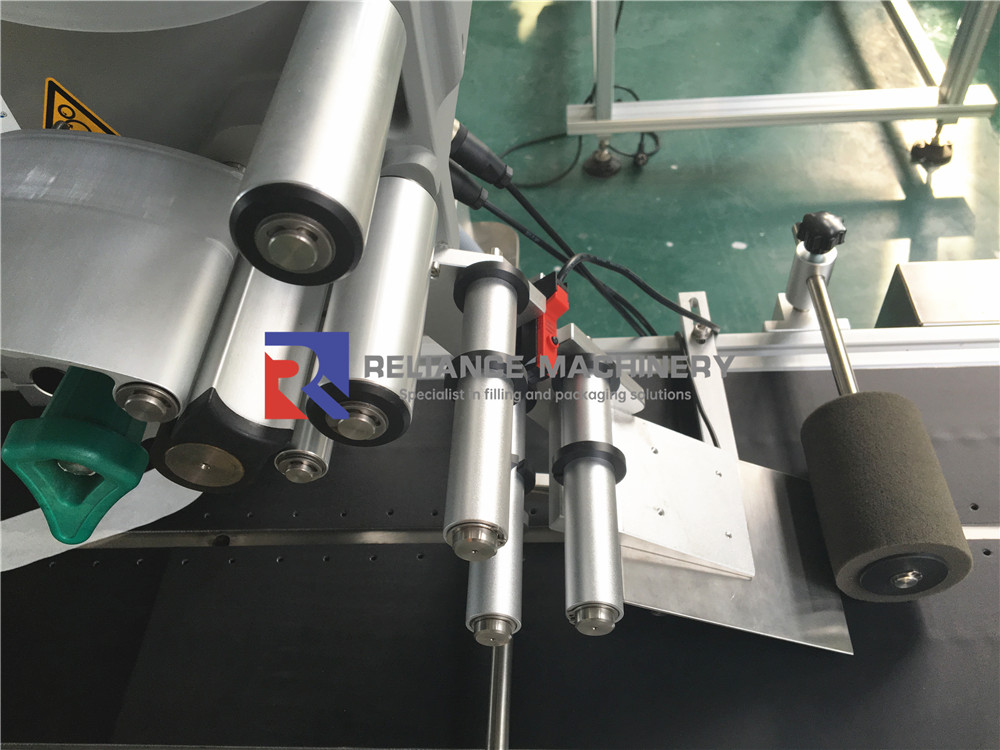
The character of the IVD container labeling machine?
The IVD container labeling machine has several characteristics that make it a useful tool for labeling and tracking IVD samples. Here are some of the key features:
1. High accuracy and precision: The machine is designed to apply labels accurately and consistently, with high precision and minimal errors. This ensures that the labels are placed in the correct position and orientation on the container and that the label text or barcode is readable and scannable.
2. Flexibility and versatility: The machine can be customized to handle various types and sizes of IVD containers, such as tubes, vials, plates, or bags. It can also accommodate different label sizes, shapes, and materials, and can apply multiple labels or wrap-around labels as needed.
3. Speed and efficiency: The machine can label a large number of containers in a short amount of time, with a high throughput rate and minimal downtime. This improves productivity and reduces labor costs, as well as minimizing the risk of errors or inconsistencies due to manual labeling.
4. Automated and easy to use: The machine is fully automated and can be controlled by a touch screen or a computer interface. It requires minimal operator intervention and can perform self-diagnostics and error reporting. The machine can also be integrated with other laboratory equipment or information systems, such as a sample management system or a laboratory information management system (LIMS).
5. Compliance and safety: The machine is designed to meet regulatory and safety standards for medical device manufacturing, such as the FDA regulations for IVD devices. It may have features such as validation documentation, security access, and traceability records to ensure compliance with quality and safety standards.

The working principle of the IVD container labeling machine?
The working principle of an IVD container labeling machine involves several steps, including container feeding, label dispensing, label application, and container ejection. Here is a general overview of the process:
1. Container feeding: The IVD containers are loaded into the machine, usually by an operator or an automated feeding system. The containers are then transported to the labeling station using a conveyor or a rotary indexing system.
2. Label dispensing: The labels are dispensed from a roll using a label dispenser unit. The dispenser unit pulls the label from the roll and releases it onto a label applicator pad or a vacuum plate.
3. Label application: The containers are positioned accurately at the labeling station, and the label applicator pad or vacuum plate applies the label onto the container's surface. The label may be applied on the side, top, or bottom of the container, depending on the machine's configuration and the label design.
4. Container ejection: After the label is applied, the labeled containers are ejected from the machine and collected in a container bin or on a conveyor. The machine may also perform additional quality checks, such as verifying the label position or checking for label presence, before ejecting the containers.
The machine's operation is controlled by a programmable logic controller (PLC) or a computerized control system. The PLC or computer sends signals to the various machine components, such as the label dispenser, applicator pad, and conveyor, to coordinate the labeling process and ensure accurate and consistent label placement. The machine can also have additional features, such as a barcode scanner, vision system, or printing system, to add more information to the label or perform quality checks.
RELIANCE Automatic Biology IVD Reagent Container Sticker Labeling Machine is available for IVD Container, Bag, Box, Carton, and Paper in pharmaceutical, food, cosmetics, CBD, tincture, essential, the healthcare industries. Different kinds of labels like transparent labels, anti-forgery labels, and barcode labels are all applicable to this machine.
| Technical Parameters | |
| Machine Size | 1600(L)×1000(W)×1250(H)mm |
| Output Speed | 20-100pcs/min depends on label and bottle size |
| Height Label Object | 30-280mm |
| Bag size | max L60cm; max W 40cm; max H10cm |
| Label Height | 15-140mm |
| Label Length | 25-300mm |
| Pastes the sign precision | ±1mm |
| Roll inside | 76mm |
| Roll Outside Diameter | 300mm |
| Power Supply | 220V 0.8KW 50/60HZ |
| Power Supply | 2800(L)×1650(W)×1500(H)mm |
| Weight of Labeling Machine | 450Kg |
WORKING PRINCIPLE:
(1) During label delivery, the label is taken out of the label library by the robot and passes through the slitting device, where it is cut into independent labels and prepared for placement.
(2) The labeled object enters the label loading area. After the sensor detects that the object is in place, it automatically detects the position and size of the object.
(3) The control system will automatically fine-tune the adjustment device to make the label fit the surface of the object being attached. After the label is attached to the item, the sensor detects the fit and determines whether the label is in place.
(4) Once the bonding is completed, the sensor will send an execution command to the controller, and the label feeding and loading work will stop. After the labeling work is completed, the manipulator will lift up and wait for the next cycle to send labels again.
(5) During the entire working process, the control system will continuously recalculate the position of the item and the adhesion of the label so that the label fits the item as closely as possible.

FEATURE:
1. The height of the angel of the labeling machine can be adjustable
2. The conveyor and labeling speed can be adjustable
3. PLC control, easy to operate, LED screen, easy to read the labeling times
4. Easy to change labels in different sizes and dimensions
5. Small compact design suit for small capacity products and lab use
6. All built with 304 Stainless steel
7. Provided with 10-30 sets of memory to save parameters from different production lines and is convenient to adjust various productions.
8. Active detection system gives the alarm and the machine stops working when out of carbon fiber tape
9. Smart detection system for missing labeling to guarantee labeling quality
BRAND LIST:
OPTIONAL:
1. Set of pneumatic wrap station (for labeling 3/4 to 1 circle around the bottle)
2. Transparent label sensor
3. Date/batch number coder/ hot stamping printer / Jet printer or thermal transfer machine
4. Adjustable labeling head angle adjustment for micro conical bottles
5. Customized rolling assembly and bottle dividing screw assembly
6. Automatic feeding & collection turntable (driven by a motor)
7. Conveyor belt lengthening at the entrance and exit ends
8. There is no printing detection, and there is no printing detection and shutdown.
MACHINE VIDEO:
Tags:
#IVDLabeler #ReagentLabeler #BioContainerLabeler #RelianceLabeler
- 2024-11-14
- 2024-10-25
- 2024-10-21
- 2024-09-24
- 2024-09-12


